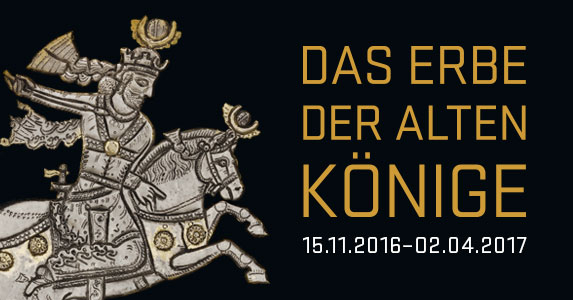Within the Excellence Cluster Topoi, the researchers in this project developed an exhibition on Ctesiphon to show that the existing culture did not “simply come to an end” and that the new culture emerged from nothing. Cooperating partners were the Museum für Islamische Kunst – Staatliche Museen zu Berlin, the German Archaeology Institute (DAI), the University of Applied Sciences (HTW), the Brandenburg University of Technology Cottbus-Senftenberg (BTU) and the Institute for Museum Research – Staatliche Museen.
Research
Source: Museum für Islamische Kunst, Staatliche Museen zu Berlin / Dominik Lengyel and Catherine Toulouse
Ctesiphon, the forgotten city of kings, stretches along the river Tigris, just 35 km south of Baghdad. Muslim geographers referred to the city as al-Mada’in (“the cities”). Ctesiphon was the capital city of the ancient Iranian dynasties of the Parthians (247 BC-224 AD) and the Sasanians (224-651). Dominated by the monumental arched hall of the Royal Palace, the Taq-e Kesra, Ctesiphon is still a symbol of the greatness and the decline of the powerful Sasanian Empire, a little-known great power in ancient Persia which competed for centuries with the Roman and the Byzantine Empires. The conquests of the Arab armies caused the political power relations to change radically in the 7th century AD. Ctesiphon remained the seat of a governor, but with the founding of Baghdad (762 AD), the city rapidly lost its importance.
Archaeological finds in the Museum stores: The Museum for Islamic Art conducted excavations in two distinct areas of Ctesiphon teaming up with the German Oriental Society in 1928-29 and with the Metropolitan Museum of New York in 1931-1932. Along with a Parthian cemetery, official palaces, numerous private quarters, and a church dating from the late Sasanian to the early Islamic time came to light. The division of the archeological finds brought 16.000 objects to Berlin, all of them now corded in the inventories. The Topoi researchers within the project (C-3-1) Ctesiphon worked in close contact with the finds. How did the fragments come together into an exhibition?
The heritage of the ancient kings: The Taq-e Kesra, for example, the impressive arched hall of the royal palace, continues to outshine the sunken cityscape. Its structural shape determined the architecture of the Islamic world into the recent past, from Cairo to Samarkand there are such open halls in private houses and public buildings. The old kings are also remembered. As heroes in legends and semi-fictional characters, they continued to live through the Persian National Shahnama (The Book of the Kings) and are still popular figures in the Iranian world. Others disappeared in the folds of history.
Exhibition “KTESIPHON – The Heritage of the Great Kings of Persia”

The exhibition “KTESIPHON – The Heritage of the Great Kings of Persia” was devoted to the Persian heritage of Islamic arts and cultures. Starting from an overview of the world around 600 AD, it introduced a multicultural landscape and illustrates the survival of techniques, ideas, and figural motifs, many of which were taken over or served as a model for new objects. The 100 exhibits illuminated the transformations from the period of the last Iranian dynasty to the early Islamic period. Some of the objects were originally part of a legendary palace and its surroundings. The exhibition revealed how Islamic cultures developed out of their predecessor cultures in the Middle East. Some of the exhibits has been on display for the very first time.
Objects from the past and us, today: What legacy did the ancient kings leave to the Islamic times, in the arts, in architecture, poetry, and in the collective memory? In the exhibition the legacy became visible. Visitors were invited to experience and reflect on quite practical problems of conducting research on the past: how is it possible to trace cultural changes through archeological finds? What are the difficulties that archaeologists encounter in their reconstruction of the past? These are complex questions of great importance for the educational work of the museum.
For several months 17 Berliners have met with the museum team posing questions and adding their knowledge about the objects on display and on the city of Ctesiphon. Various perspectives on the exhibits were discussed in the exhibition. Yet, why is this epoch so important for us today? This cooperation offered an answer to this question: the roots of Islamic culture are planted in the fertile soil of the late historical developments of the Mediterranean and Iran. These are the very same roots as the European ones.
